Monitors are output devices in a computer system that deliver visual information. They are also called VDU i.e. Visual Display Unit. Just like speakers deliver information that is perceived audibly, monitors deliver information that is perceived visually.
Just like any other device, monitors have also evolved with time. There is a variety of monitors that use different mechanisms and technologies to work. They use different techniques to display the desired information on the screen for the user to perceive it visually.
Mainly computer monitors come in five types. These are Cathode Ray Tube(CRT) monitors, Flat Panel Monitors, LCD Monitors, LED monitors, and OLED Monitors. All these CRT monitors are almost dead now as demands have drastically changed while others are still in high demand.
This article categorizes various monitors based on the technologies they use and talks about them in detail.
Also Read: Best Monitors For Stock Trading-7 Best Options | PcRux
Different Types Of Computer Monitors
Many times we face issues with unproductive computer monitors. That is the right time when you need to know about the type of monitor you are using and if there is any need to replace it.
1. CRT Monitors(Cathode-Ray Tube)
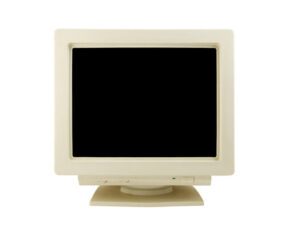
CRT monitors were used back in the 1900s. They are known to convert an electrical signal into a visual signal. A CRT monitor setup contains a vacuum tube with an electron gun at one end and a phosphor-coated fluorescent screen at the other end.
The electron gun shoots cathode rays which are directed towards the screen with the help of focusing and deflecting systems. The rays gain velocity as they pass through the vacuum tube and hit the fluorescent screen. This hitting causes a flashing of light and you are able to see on your screen from the front.
The good thing about CRT monitors was that they had anti-glare screens. Therefore, unlike modern screens, working on a CRT monitor for long hours won’t affect your eye health to a massive extent.
CRT monitors had some major shortcomings as well. They had high power consumption rates and they occupied a lot of space. All these factors suggested evolution and so, flat-panel monitors entered the picture.
2. Flat Panel Monitors

Flat Panel Monitors are used everywhere these days. They are lighter, compact, and consume less power as compared to CRT monitors.
Flat-panel monitors use 2 types of technologies:-
- Emissive display- The devices that convert electrical energy into visual light are said to have an emissive display. E.g. Gas Plasma Display monitors, and LED monitors.
- Non-Emissive display- The devices that use optical effects to convert light into interpretable graphic patterns are said to have a non-emissive display. E.g. LCD monitors.
3. Plasma Display Monitors
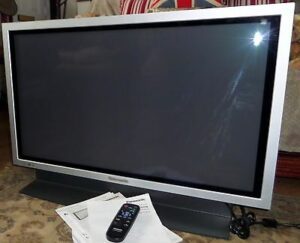
Plasma is a state of matter that has numerous electrically charged particles in it.
In a plasma display monitor, these particles get their charge from the power supply and show up as displayed in the front after passing through the phosphorous plate and the RGB color pixels. This panel is also known as the Gas display or gas plasma display.
Plasma Monitors were seen in the market for a very brief time after the CRT monitor. The reason they did not catch the hype was that they were very bulky and inconvenient. They consumed massive power and the lifespan of plasma monitors was short. These monitors were very suitable for gaming as the refresh rate was good and issues like motion blur were bleak.
Although they delivered better picture quality in terms of contrast and brightness as compared to LCDs, the challenges were too prominent to be ignored.
4. LCD Monitors-Liquid Crystal Display
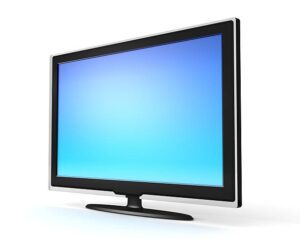
LCD monitors incorporate one of the most advanced technologies available today. The screen of this type of monitor is made up of a few layers. These layers comprise a backlight, a polarization filter, and a crystal display film.
The backlight uses CCFL (Cold cathode fluorescent) lighting. The crystal film is made up of twisted nematic liquid crystals. The arrangement of molecules in this film is such that they are twisted at an angle of 90 degrees. The light from the backlight passes through all these layers and alters polarizations to finally reflect on the main screen for the user to view. The magnitude of clarity of the image depends on the density of pixels on the screen. Every pixel has subpixels and color filters which help optimize the image.
In order to enhance the picture quality of regular LCD screens, a new technology called TFT was put to use.
- Thin Film Transistor – TFT Monitor
The thin-film transistor is a technology that high-resolution LCD monitors use. It is basically a grid of thin-film transistors added to the liquid crystal in order to improve its contrast, sharpness, and brightness. TFT LCDs are so ideal for PC monitors because they allow thin display and they aren’t too expensive to produce.
- In-Plane Switching – IPS Monitor
IPS is just one out of several types of LCD panels. In-plane switching refers to the way molecules inside the liquid crystal are positioned. In an IPS panel monitor, the molecules are aligned and positioned parallel, in such a way that it gives a wide viewing angle and has an increased color accuracy. IPS LCDs have their fair share of downsides as well, they are very expensive to manufacture and are very heavy power consumers. On top of that, molecule orientation demands a worse response time and refresh rate.
Despite the fact that LCDs overcame the many shortcomings of CRT, they still had some demerits such as being heavyweight, having a short lifespan, and decreasing brightness over time.
In order to overcome these, LED monitors were invented.
4. LED Monitors-Light Emitting Diode
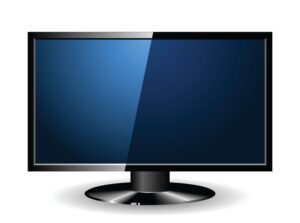
LED monitors are one of the latest types of monitors available in the market today. They are named so because they make use of light-emitting diodes for backlighting instead of CCFL. All LCDs need a backlight and a Light-emitting diode is the most popular option right now.
NOTE: IPS and LEDs are not mutually exclusive. Most IPS monitors have LED backlights.
LED monitors consume very little energy in comparison to the previous types of monitors and are more environmentally friendly.
With regards to LCDs, we have 2 types of LED backlights.
- Edge-lit LEDs- They are positioned around the edges of the display. They allow for thinner displays and are more power-efficient. However, they may face backlight uniformity problems and they aren’t as bright.
- Direct-lit LEDs- They are positioned behind the screen. They have good backlight uniformity and higher overall brightness, but they require bulky displays and consume more power.
5. OLED Monitors-Organic Light Emitting Diode
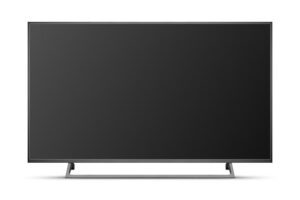
Contrary to the common notion, OLED has nothing to do with backlights or even LCD panels. Organic Light Emitting Diode is a completely new display technology. The fact that OLED displays do not require a backlight of any kind makes them unique, with a very new approach.
So how does an OLED work without any backlight?
Well, each pixel in an OLED is its source, i.e. OLED technology allows for each pixel to light up independently and function as its own light source. This makes OLED displays far more power-efficient than LED displays.
Their ability to turn ON/OFF and modify the lighting and color of each pixel individually makes the contrast and brightness quality very good. The only technical drawback of OLEDs is that they might be poor at image retention but that can be mitigated by optimizing the screen saver settings feature.
Despite OLEDs being superior to LEDs in every sense, their market is relatively small, this is because of the fact that they are heavy on pockets.
Also Read: Monitors For Office Productivity-7 Best Options | PcRux
Physical Features Of Computer Monitors
After having talked about the various mechanisms and technologies underlying different screens, let us look at a couple of physical features that make a solid distinction.
Features like curved screens and touch screens are being put to use in order to enhance the user experience.
Curved screens can be made using LCD technology. However, OLED technology works better when it comes to curved screens.
Touch screens are a feature that is put from the top in the form of layers. The touch screen layers are inbuild in touch screen devices and it is independent of the technology that the monitor underneath uses. However, there is an option to add the touch screen layers separately and with the help of this, you can make any screen touch-sensitive.
Wrapping Up – Different Types Of Computer Monitors
Monitors have seen great evolution with the passing years and these technologies have kept getting better. In order to choose a suitable monitor, you should be aware of the underlying technology it uses to evaluate its worth accurately. This article talked about various types of monitors based on their technologies. For more such information, check out our website.